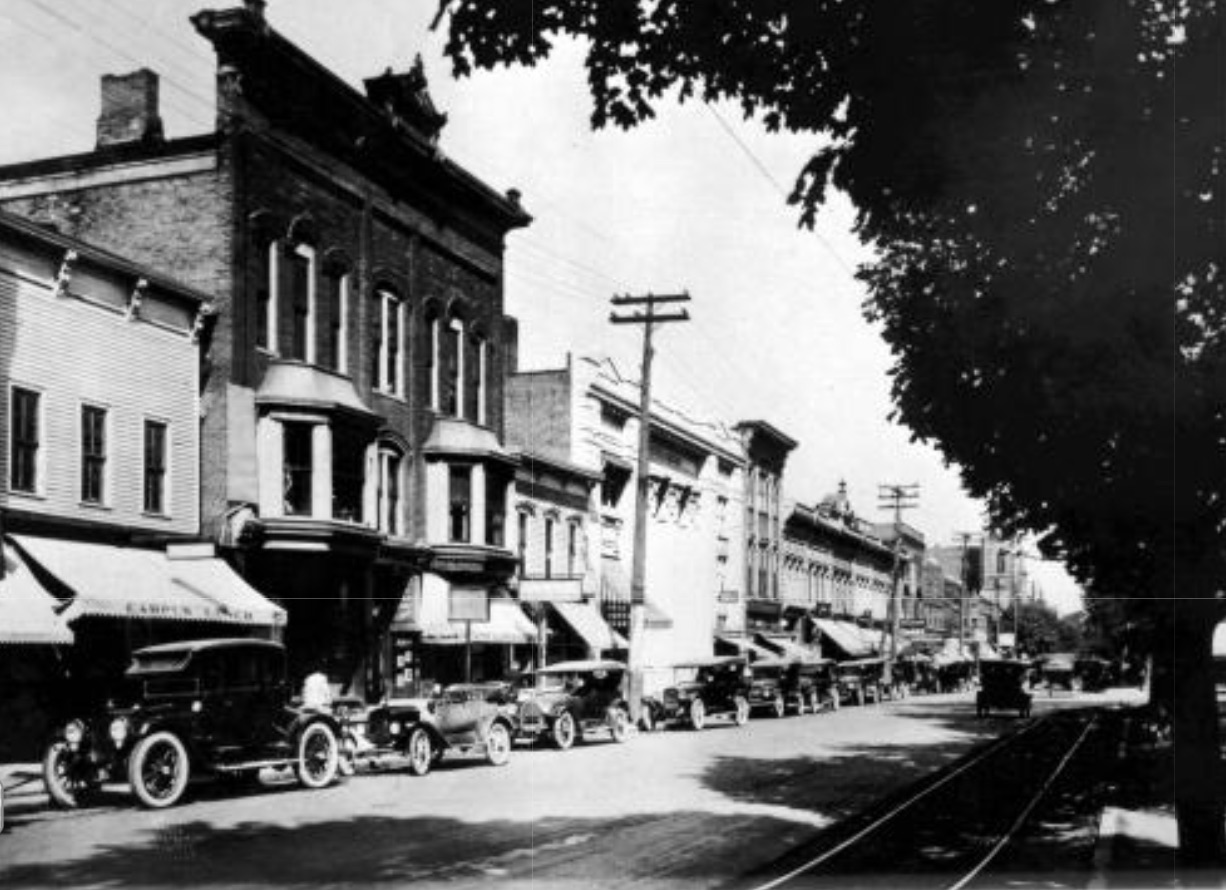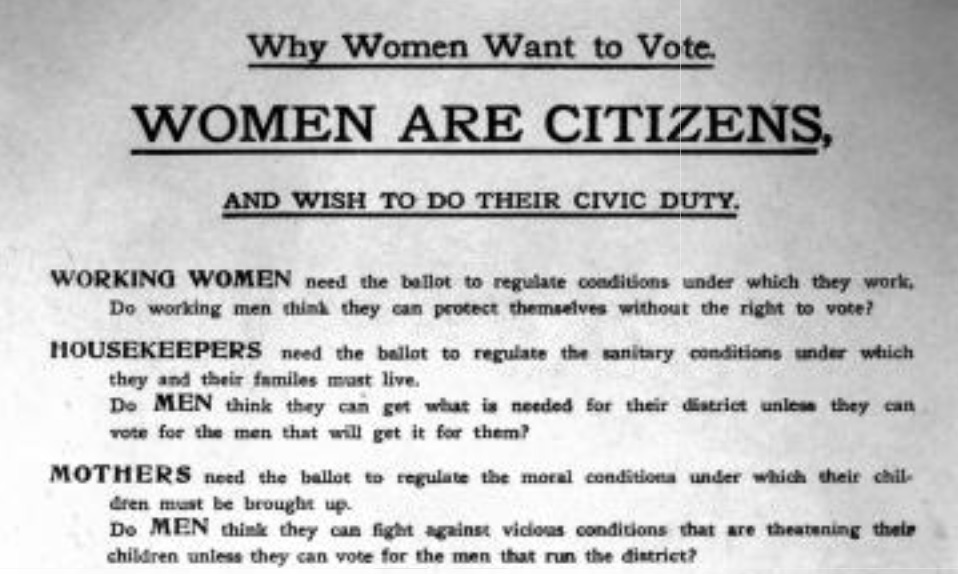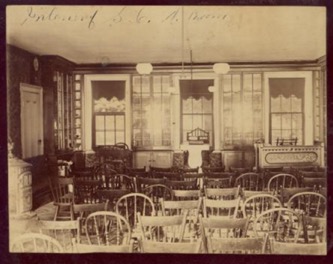State Street Suffragists
In 1894, Susan B. Anthony held a lecture on Women’s Suffrage in Newberry Hall, and thus The Ann Arbor Equal Suffrage Association was born.
The University of Michigan has long been regarded as a place that drives social movement and change. Evidence of students and faculty fighting for both justice and their own beliefs can be found in many stages of the university’s past, in many mdifferent places.
For many, when they think of these pivotal events, they imagine the spaces of The Diag, or Ingalls Mall. What is often forgotten is the space of State Street, though many a times students and faculty have marched down it in protest or support, of this or that cause. There have been several impactful speeches delivered to large crowds on the steps of the Union and Angel Hall, and there have been several rallies and protests that marched their way down the street as well. Most people do not know that State Street was the space in which the Women’s Suffrage Movement was most active at the University of Michigan, as well as its birthplace in Ann Arbor.

Women would deliver speeches from the running boards of vehicles parked along State Street. Image courtesy of Bentley Historical Library.
State Street as a Space for Women’s Suffrage
In the late 1800’s, the Women’s Suffrage Movement began to gain momentum in Ann Arbor and across the state of Michigan. Madelon L. Stockwell became the first woman to attend the University of Michigan in 1870. By 1910, there were more than 1,000 women enrolled in the university (“For Michigan Women Everywhere”, 1924). With more educational and career options available to them, women on campus became more and more active in fighting for equal rights. The founding of the first women’s suffrage group in Ann Arbor happened right on State Street, when the Michigan State Equal Suffrage Association held a lecture. “It convened in Newberry Hall, January 15-17, with a large attendance and resulted in the organization of the Ann Arbor E. S. A., with one hundred members” (Anthony and Stanton 1902, 758). The lecturer that day just happened to be Susan B. Anthony. Thus in 1894, The Ann Arbor Equal Suffrage Association was formed with the goal of gaining the right for women to vote (“University Notes” 1893).
In respect to the original forty-acre campus that still existed at the time, State Street had the heaviest traffic of both pedestrians and automobiles because of its shops and restaurants. People would park their flashy automobiles along the street (in part to show off), and these automobiles became an unlikely soap box of sorts for the suffragists. Small groups of women and men would gather in the street to listen to the suffragists announce upcoming speakers, or make speeches themselves. Many speeches were reportedly delivered along State Street from the running boards of vehicles (Behnke 1910-1913, F3-F7; F11-F13).
When prominent Suffragists were visiting to speak, members of The Ann Arbor Equal Suffrage Association would distribute window cards to the businesses of Nickels Arcade to advertise the upcoming event. A news article from October 4th, 1912 states that out of all the businessmen asked to display the window cards, “only two made violent objection to equal suffrage, and no one refused to have a card put in his window” (Behnke 1912, F3). This suggests that the University of Michigan and Ann Arbor were generally on board with women’s suffrage in 1912, which was eight years before the 19th Amendment was passed. One could imply that the University of Michigan was more progressive than many other places in the United States at the time.

Window cards like these would be placed in windows to advertise upcoming speakers. Image courtesy of Bentley Historical Library.
Newberry Hall
Students and faculty, both former and present at the time, were among the members of The Ann Arbor Equal Suffrage Association (Behnke 1910, F13). These women, along with the members of the Ypsilanti Equal Suffrage Association were active all throughout Ann Arbor, but especially in Newberry Hall, where they often held meetings and speakers. With money donated by Mrs. Helen H. Newberry in honor of her late husband John H. Newberry, the Students’ Christian Association of the University of Michigan built Newberry Hall in 1891 to serve as their headquarters (Student Christian Association at University of Michigan 1891). In the early 1900s, it was clear that the large amount of Christian women on campus were in need of their own space. Thus in 1904, Newberry Hall became the home of the campus Young Women’s Christian Association (Donnelly, Shaw, and Gjelsnes 1958).
With a new place to meet, the Young Women’s Christian Association began to host a multitude of speakers and events that aligned with their interests. At the time, temperance was a hot ticket issue for Christians, and many supporters spoke to the young women at Newberry Hall (Behnke 1910-1913, F13). Whereas all of the members of the Young Women’s Christian Association could agree on the issue of temperance, they were split on the issue of women’s suffrage. The Ann Arbor Equal Suffrage Association was in fact formed at Newberry hall, but it is evident that not all of the women in the Young Women’s Christian Association agreed with the idea of women being allowed to vote (“Students Christian Association Bulletin” 1880-1884, 12).

One of the classrooms in Newberry Hall where Suffragists would hold meetings and other events.
The Anti-Suffragist’s Space
Of course, the space of State Street was also used as an arena for the Anti-Suffragist Movement. The University of Michigan associations that were opposed to women’s suffrage would hold their speeches at Newberry Hall as well, because it was a womens’ space. Multiple occurrences of anti-suffragists speaking to the young women at Newberry Hall are recorded amongst the newspapers of the time (Behnke 1910-1913, F11-F13). This led to tensions among the female students that lived at Newberry Hall, as it was often a very polarizing environment. Women sometimes felt that themselves and their friends were being torn apart by the constant and conflicting speeches and rallies being held (Hazzard 1920).
It is with no surprise that as the years progressed, Newberry Hall stopped holding as many controversial speakers, who instead opted for High School Hall (Behnke 1913, F13). Newberry Hall still hosted the occasional speaker, however. Despite this departure from Newberry Hall, State Street remained an arena for many of the suffragist marches and speeches until the 19th Amendment was signed in August, 1920.
Though State Street is often thought of as a male space in the early 1900s because of the proliferation of the Union, it was of great importance to the women at University of Michigan and in Ann Arbor. Now that women have the right to vote, it may seem like the distant past, but what was done on State Street was of great importance. It has been forgotten how important Newberry Hall and State Street are as a place of change for the University, but one can hope that it will be forgotten no longer.
Sources
-
Behnke, Zoe Ann Bliss.”Record of All Suffragist events in Washtenaw County”, Woman Suffrage Movement in Washtenaw County. 1910-1913.
-
“Flier Distributed by the National American Woman Suffrage Association Advocating the Vote for Women.” Bentley Image Bank, Bentley Historical Library. Accessed March 20, 2017.
-
Hazzard, Florence W., and Katharine Lee Bates. “Florence W. Hazzard Papers”, Ca. 1920-1966”.
-
Shaw, Wilfred Byron, and University of Michigan. The University of Michigan, an Encyclopedic Survey, 2001.
-
Stanton, Elizabeth Cady, Susan Brownell Anthony, Matilda Joslyn Gage, and Ida Husted Harper. History of Woman Suffrage: 1900-1920. Fowler & Wells, 1922.
-
Students’ Christian Association (University of Michigan). “Students Christian Association Bulletin” 1–5 (1880-1884).
-
“University Notes.” Michigan Daily Digital Archives, December 13, 1893.
-
University of Michigan. For Michigan Women Everywhere. [24] p. incl. illus., ports. Detroit, Mich.: University of Michigan Women’s League building and endowment fund, 1924.